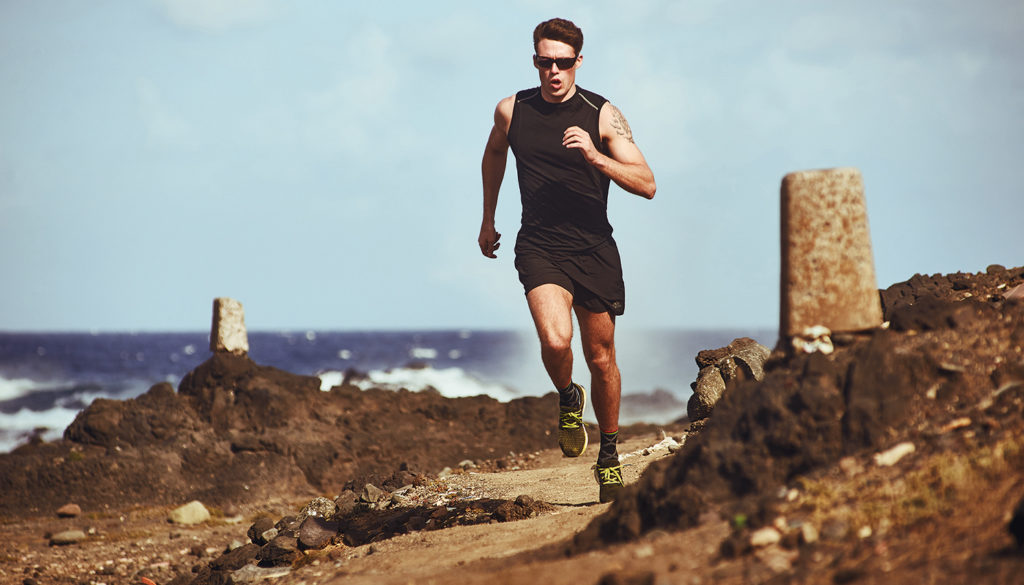
PH by James Carnegie
In recent years, Gran Canaria – the second largest of the Canary Islands, situated just off the northwest coast of Africa – has become a top destination for runners. And it’s not difficult to understand why.
At around four hours from the UK by plane, Gran Canaria is not as close as Mallorca or mainland Spain. However, visitors are spoilt for choice, with technical trails, picture-postcard Spanish villages, pine forests and mountain-top vistas. All situated only a short drive from any one of the towns or resorts that dot the island. It’s hard to think of a place with a more varied or exciting terrain for runners.
Escape the crowds
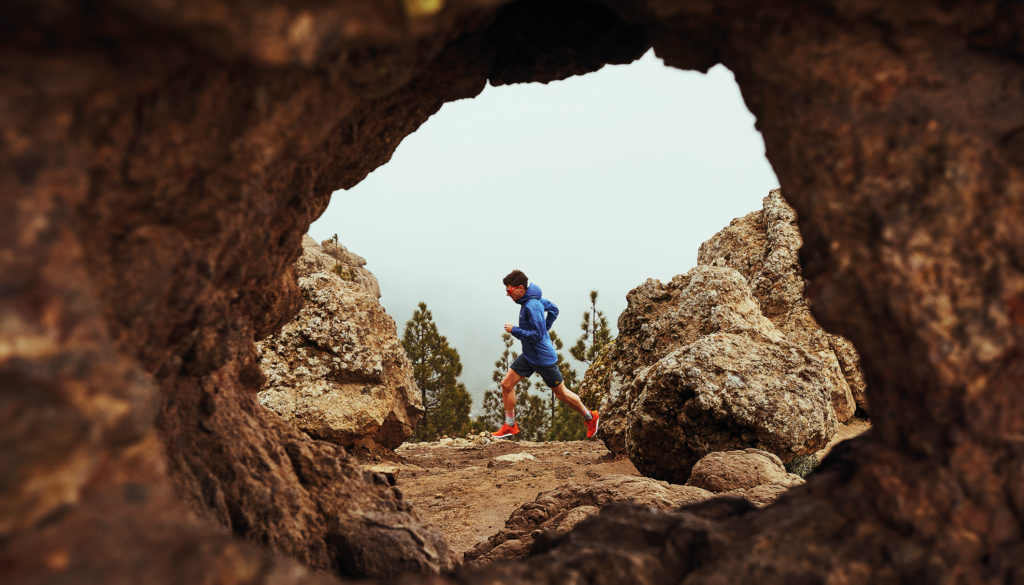
While tourists flock in their droves to the sandy beaches of Playa del Ingles and Puerto Rico, for trail runners the main draw must be the mountainous centre of the island.
Approximately an hour’s drive from the main coastal resorts is the towering peak of Roque Nublo. At 1,813m it’s one of the most imposing (and Instagrammed) features of the island and, on a clear day, offers unrestricted 360° views down to sea. There are several trailheads to choose from and each winds its way along rough yet well- maintained trails, before spitting runners out on a barren, rocky plateau beneath the rock itself.
Although the main show is Roque Nublo, there is no shortage of other interesting rock formations nearby with one particular spire, El Fraile, sharing an uncanny similarity to the Old Man
of Stoer – albeit a long way from the coast of Scotland.
For those interested in peak bagging, a short run from Roque Nublo leads to Pico de las Nieves which, at 1,913m, is the highest point of the island. Although much of the summit is occupied by a military base, the evergreen pine forest trails leading to the top provide a welcome contrast to the more brutal volcanic rock paths that make up a good proportion of the running on the island.
Run the dunes
Situated at the furthest point south on the island, the Maspalomas Dunes were formed during the last ice age and have been a protected nature reserve for more than 100 years. Juxtaposed against the German/British tourist resorts of Maspalomas and Playa del Ingles they offer runners endless views of sand akin to the Namib or Sahara Deserts.
Running in this deep, hot sand is no easy task and, while leaping down the dunes like a five-year-old is hugely satisfying, climbing back up again is tough, quad-burning work. For those keen to check out the views, head to the dunes as the sun goes down and capture a truly epic sunset.
A valuable word of warning to the less liberal reader: The Dunes are a well-publicised naturist spot, so don’t be surprised to encounter a group or two (of mainly men) rotating slowly as the sun moves from East to West. Tan lines are so 2016, apparently.
Tackle the technical trails
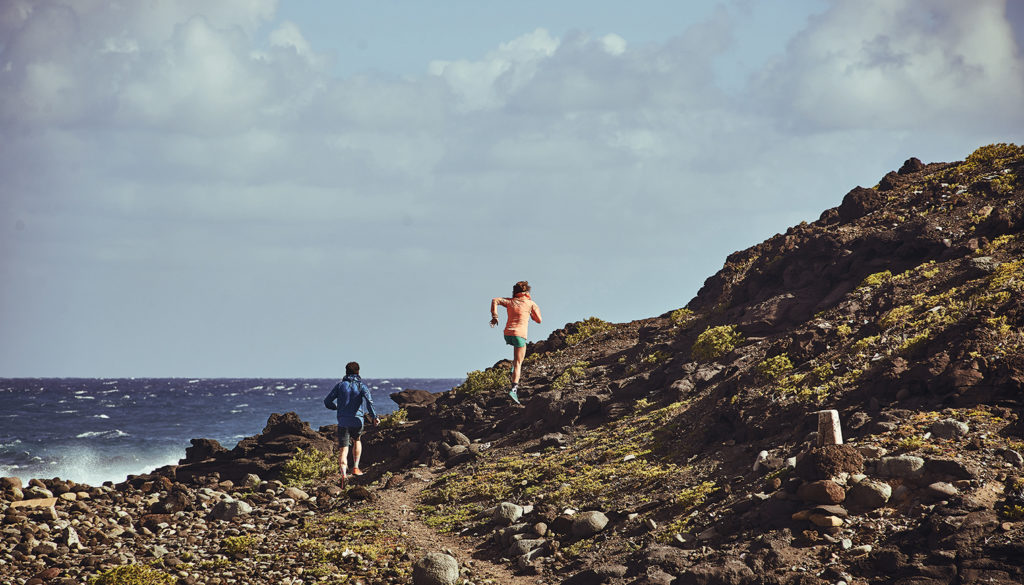
The north of the island is arguably home to some of the steepest, most technical climbs on the island. Starting at the coastal resort of Agaete, runners must navigate rock and loose trails as they ascend on the Camino de los Romeros – the first climb of the fabled Transgrancanaria 125K ultra. The big effort rewards with amazing views of the ocean and the green valleys of Agaete and Tirma.
For those wanting something less challenging, the ridgeline route from Confital, the most northwesterly beach in Gran Canaria, is a winner. Starting at Confital, the trail follows the waterline with views of the capital city Palma. After several sandy loops it head up on to the ridge of a small inactive volcano. Literally a stone’s throw from the capital city, this is a super-convenient run that whisks you away from the hustle of Palma and right onto nature’s doorstep.
Experience Gran Canaria like a local
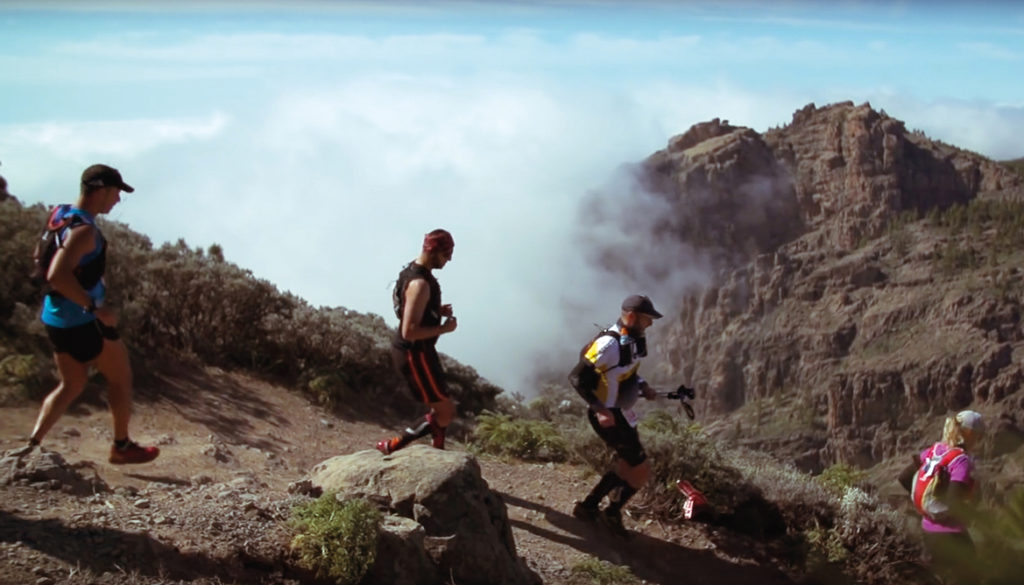
Although the coastal resorts can be somewhat brash and loud, the hundreds of white painted towns that litter the hills offer a rare insight into local life – and a welcome escape from schnitzel and cheap lager. Stop in any small town and there will be at least one bar-café where you can enjoy a café con leche and soak up the atmosphere.
A short drive from Roque Nublo and Pico de las Nieves, the jewel in the island’s crown must be Tunte, or San Bartolomé de Tirajana, as it is known locally. As a small provincial town in of one of Spain’s richest municipalities, expect to find freshly trimmed hedges, immaculate white buildings and an air of quiet self-confidence. This is also one of the best spots to tuck in to freshly prepared local food at one of the many small restaurants. A particular regional speciality is Papas Arrugadas con Mojo – potatoes in a mojo sauce – a perfect post-run refuel snack.
Gran Canaria know-how
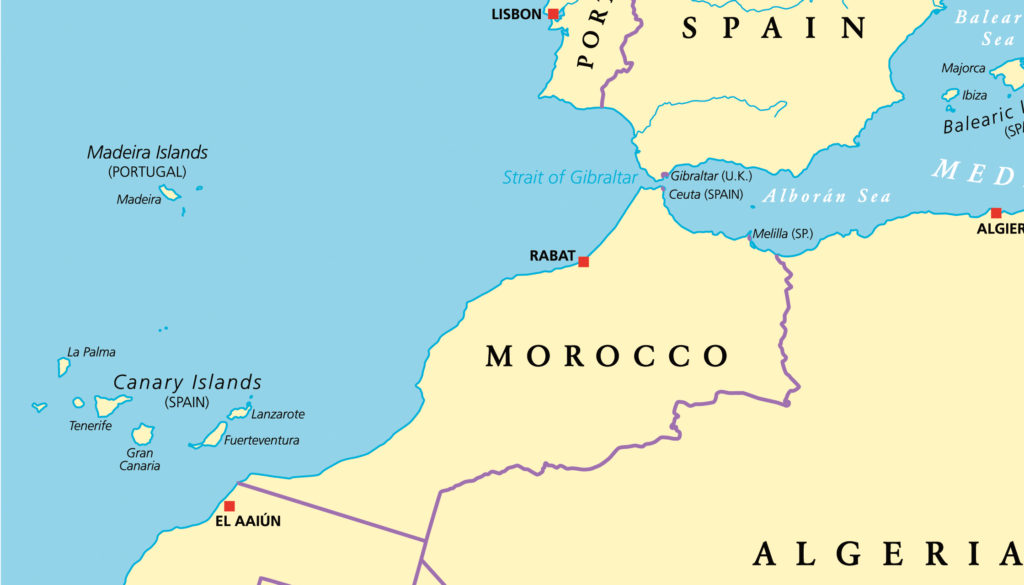
Gran Canaria is the second most populous and third largest (1,560kmsq) of Spain’s Canary Islands archipelago, off the coast of northwest Africa. The island is best known for its black lava and white sand beaches, while volcanic peaks soar to almost 2,000m. It’s famed for the 125K Transgrancanaria HG ultramarathon, part of the Ultra-Trail World Tour.
The island’s capital, Las Palmas, was established in 1478 and the island finally conquered by the Spanish five years later, after a campaign against the Canarii people. Illustrious seadog Christopher Columbus spent time here on his first trip to the Americas.
The writer, James Poole, is an ultrarunner and co-founder of Advent Running. He finished eighth in the inaugural Transgrancanaria 360 – a 265K-unsupported race around the island.






